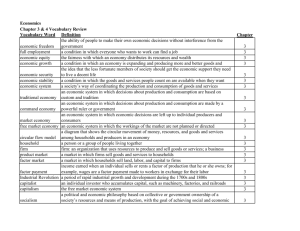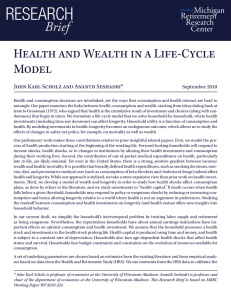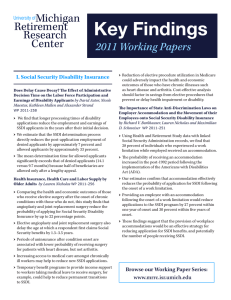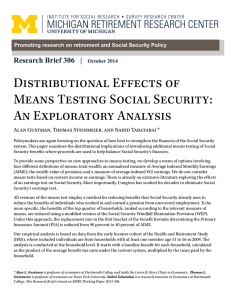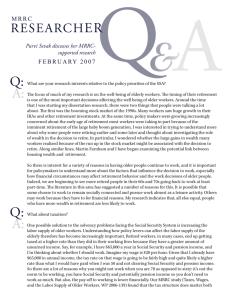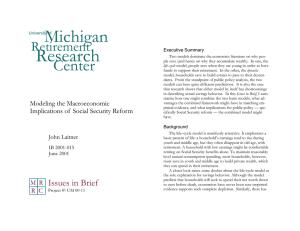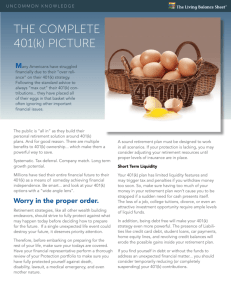Comparing Retirement Wealth Trajectories on both Sides of the Pond
advertisement
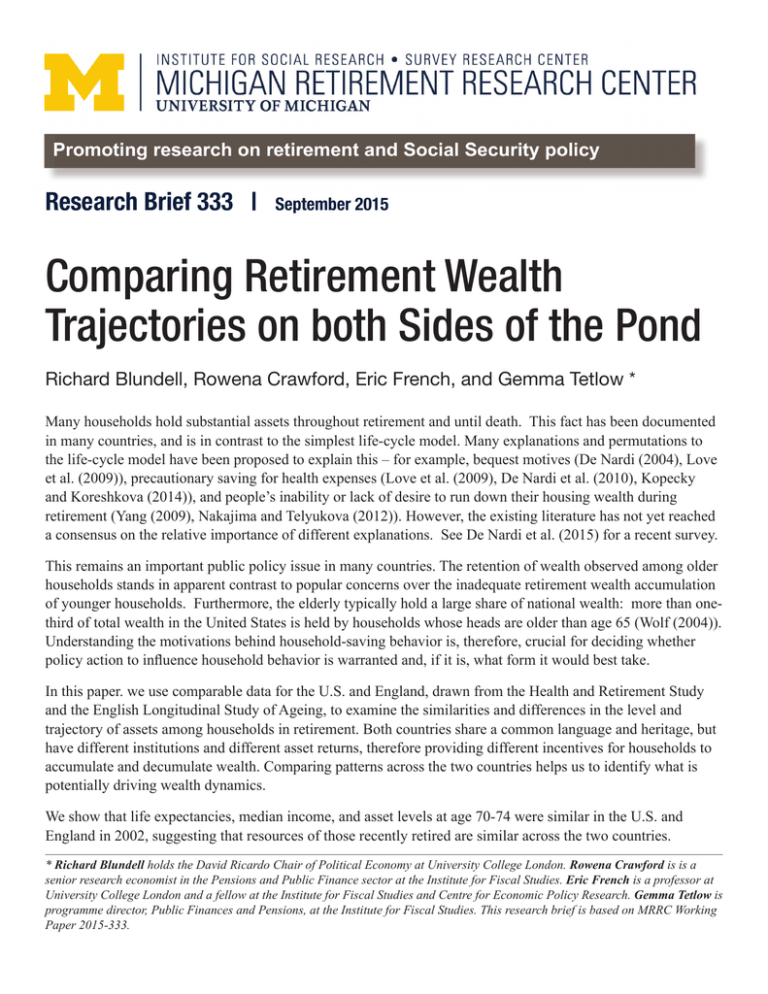
Research Brief 333 | September 2015 Comparing Retirement Wealth Trajectories on both Sides of the Pond Richard Blundell, Rowena Crawford, Eric French, and Gemma Tetlow * Many households hold substantial assets throughout retirement and until death. This fact has been documented in many countries, and is in contrast to the simplest life-cycle model. Many explanations and permutations to the life-cycle model have been proposed to explain this – for example, bequest motives (De Nardi (2004), Love et al. (2009)), precautionary saving for health expenses (Love et al. (2009), De Nardi et al. (2010), Kopecky and Koreshkova (2014)), and people’s inability or lack of desire to run down their housing wealth during retirement (Yang (2009), Nakajima and Telyukova (2012)). However, the existing literature has not yet reached a consensus on the relative importance of different explanations. See De Nardi et al. (2015) for a recent survey. This remains an important public policy issue in many countries. The retention of wealth observed among older households stands in apparent contrast to popular concerns over the inadequate retirement wealth accumulation of younger households. Furthermore, the elderly typically hold a large share of national wealth: more than onethird of total wealth in the United States is held by households whose heads are older than age 65 (Wolf (2004)). Understanding the motivations behind household-saving behavior is, therefore, crucial for deciding whether policy action to influence household behavior is warranted and, if it is, what form it would best take. In this paper. we use comparable data for the U.S. and England, drawn from the Health and Retirement Study and the English Longitudinal Study of Ageing, to examine the similarities and differences in the level and trajectory of assets among households in retirement. Both countries share a common language and heritage, but have different institutions and different asset returns, therefore providing different incentives for households to accumulate and decumulate wealth. Comparing patterns across the two countries helps us to identify what is potentially driving wealth dynamics. We show that life expectancies, median income, and asset levels at age 70-74 were similar in the U.S. and England in 2002, suggesting that resources of those recently retired are similar across the two countries. * Richard Blundell holds the David Ricardo Chair of Political Economy at University College London. Rowena Crawford is is a senior research economist in the Pensions and Public Finance sector at the Institute for Fiscal Studies. Eric French is a professor at University College London and a fellow at the Institute for Fiscal Studies and Centre for Economic Policy Research. Gemma Tetlow is programme director, Public Finances and Pensions, at the Institute for Fiscal Studies. This research brief is based on MRRC Working Paper 2015-333. Furthermore, real incomes tend to rise throughout later life in England but fall in the U.S., meaning that for those near the median, retirement income in England is larger than in the U.S. Since retirement income is greater in England, the simple life-cycle model would suggest English households have less need to save and should thus decumulate wealth faster than their U.S. counterparts. This conclusion would likely be strengthened further if we built in other explanations that have been put forward for why U.S. households decumulate wealth so slowly at older ages. For example, English households have lower medical spending late in life and thus need to save less for this than their American counterparts, again allowing them to have lower assets late in life. However, we show that, over the period 2002–2011, assets were drawn down more slowly in England than the U.S. In fact, median net wealth of older English households actually increased over the period. This striking difference is largely attributable to the more rapid growth in house prices in England over the period. Notwithstanding the question of why households did not draw on this positive wealth shock, there are other differences as well: Nonhousing wealth was decumulated less rapidly in England, and even stripping out house price changes, housing wealth was drawn on less in England than the U.S. These comparisons suggest that the nature of housing as an asset – its utility value, illiquidity, and mix of risk and returns – is likely to be an important factor in explaining the trajectory of wealth in retirement. This is in line with the findings of Nakajima and Telyukova (2013, 2014), and contrary to the findings of Skinner (1996). In this analysis, we do not quantify the relative importance of housing versus other factors driving retirement savings, such as bequest motives or saving to insure against the risk of living long and having high medical spending. Disentangling the relative importance of these factors is an interesting direction for future research. University of Michigan Retirement Research Center Institute for Social Research 426 Thompson Street Room 3026 Ann Arbor, MI 48104-2321 Phone: (734) 615-0422 Fax: (734) 615-2180 mrrcumich@umich.edu www.mrrc.isr.umich.edu Sponsor Information: The research reported herein was performed pursuant to a grant from the U.S. Social Security Administration (SSA) through the Michigan Retirement Research Center (MRRC). The findings and conclusions expressed are solely those of the author(s) and do not represent the views of SSA, any agency of the federal government, or the MRRC. Regents of the University of Michigan: Michael J. Behm, Grand Blanc; Mark J. Bernstein, Ann Arbor; Laurence B. Deitch, Bloomfield Hills; Shauna Ryder Diggs, Grosse Pointe; Denise Ilitch, Bingham Farms; Andrea Fischer Newman, Ann Arbor; Andrew C. Richner, Grosse Pointe Park; Katherine E. White, Ann Arbor; Mark S. Schlissel, ex officio



